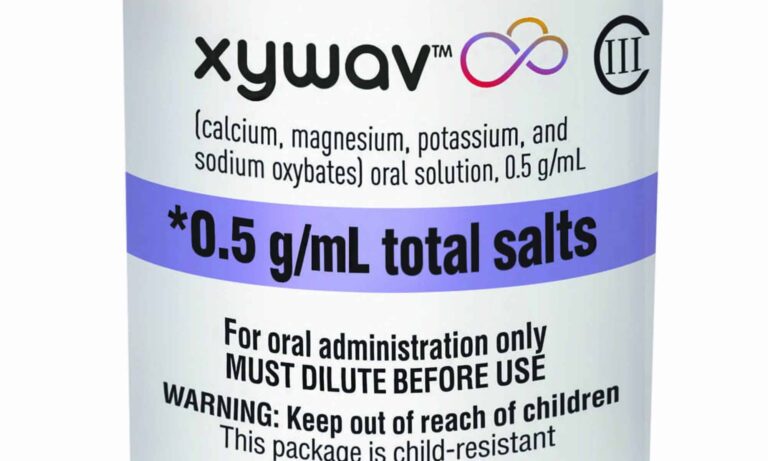Can You Take Modafinil with Birth Control?
Modafinil is a prescription medicine used to promote wakefulness in people with conditions such as narcolepsy, obstructive sleep apnea, and shift work sleep disorder. Many women who take modafinil also rely on hormonal contraceptives, including birth control pills, patches, or vaginal rings, to prevent pregnancy. Research and clinical guidance show that modafinil can make some forms of hormonal contraception less effective, which increases the risk of unintended pregnancy.
How Modafinil Works
Modafinil is a central nervous system stimulant that promotes wakefulness. It works by affecting brain chemicals involved in the sleep-wake cycle, particularly dopamine and other neurotransmitters (Greenblatt & Adams, 2023). The drug is metabolized in the liver through the cytochrome P450 system, especially CYP3A4. Because of this, modafinil can interfere with other drugs processed in the same way, including hormonal contraceptives.
How Birth Control Works
Hormonal contraceptives prevent pregnancy by stopping ovulation, thickening cervical mucus, and changing the uterine lining. These include:
- Combination oral contraceptives (the pill)
- Progestin-only pills (mini pill)
- Vaginal rings
- Patches
- Some hormonal IUDs (intrauterine devices)
- Implants and injections
Non-hormonal options, such as the copper IUD and barrier methods, work through different mechanisms and are not affected by liver enzyme changes.
How Modafinil Affects Hormonal Contraceptives
According to the U.S. Food and Drug Administration (2015), modafinil induces certain liver enzymes that speed up the breakdown of hormones found in many contraceptives. This means the drug reduces the time contraceptive hormones remain active in the body, lowering their effectiveness.
- Most affected: Oral contraceptive pills, vaginal rings, and patches.
- Less affected or safe to use: Copper IUDs, Depo-Provera injection, and some hormonal IUDs (U.S. Food and Drug Administration, 2015; Queen Victoria Hospital NHS, 2020).
Barrier methods like condoms are not affected by modafinil but are considered less reliable if used alone.
How Long the Interaction Lasts
The FDA recommends that women use alternative or additional contraception while taking modafinil and for at least one month after stopping the medicine (U.S. Food and Drug Administration, 2015). Some clinical leaflets extend this period to two months to ensure the liver enzymes return to normal activity (Queen Victoria Hospital NHS, 2020).
Risks During Pregnancy
Modafinil has been linked to an increased risk of birth defects when taken during pregnancy. A Danish cohort study found a 15 percent rate of major congenital malformations in children exposed during the first trimester, compared with about 3 percent in the general population (Damkier & Broe, 2020). A U.S. pregnancy registry study found similar results, reporting a higher rate of heart defects and cleft lip or palate among exposed infants (Kaplan et al., 2021).
Because of this, women planning a pregnancy should not take modafinil. If a woman becomes pregnant while using modafinil, she should contact her healthcare provider immediately to discuss safer alternatives.
Safer Contraceptive Options While Taking Modafinil
Women using modafinil should consider the following contraceptive methods:
- Recommended: Copper IUD, Depo-Provera injection, or hormonal IUDs such as Mirena or Kyleena.
- Not recommended as sole methods: Oral contraceptives, vaginal rings, or patches while on modafinil.
- Barrier methods: May be used but should not be relied on alone due to higher failure rates.
Healthcare providers can help determine the best method based on individual health needs and preferences.
Practical Guidance for Women
- Tell your doctor or pharmacist if you are using birth control and are prescribed modafinil.
- Do not stop or switch contraception without medical advice.
- Continue effective contraception for at least one month after stopping modafinil.
- If pregnancy is planned, stop modafinil in consultation with your doctor and continue contraception until the drug is cleared from your system.
Conclusion
Modafinil can make hormonal birth control less effective and may increase the risk of birth defects if taken during pregnancy. Women using modafinil should talk with their healthcare provider about safer contraceptive options and should avoid becoming pregnant while on the medication. Clear communication with healthcare professionals is essential to balance treatment needs with reliable pregnancy prevention.
FAQs
Can I take modafinil while on the pill?
Yes, but it is not recommended to rely on the pill alone. Modafinil lowers its effectiveness, so another form of contraception should be used at the same time.
How long after stopping modafinil do I need backup contraception?
At least one month is recommended (U.S. Food and Drug Administration, 2015). Some guidance suggests two months to be cautious (Queen Victoria Hospital NHS, 2020).
Does modafinil affect emergency contraception?
Yes. Modafinil can reduce the effectiveness of hormone-based emergency contraception pills. A copper IUD is considered the most reliable option in this case (Queen Victoria Hospital NHS, 2020).
Is it safe to get pregnant while taking modafinil?
No. Studies show a higher risk of birth defects if modafinil is taken during pregnancy (Damkier & Broe, 2020; Kaplan et al., 2021). Women planning pregnancy should stop modafinil under medical supervision.
References
- U.S. Food and Drug Administration. (2015). PROVIGIL® (modafinil) tablets, for oral use, C-IV [prescribing information]. U.S. Department of Health and Human Services. https://www.accessdata.fda.gov/drugsatfda_docs/label/2015/020717s037s038lbl.pdf
- Greenblatt, K., & Adams, N. (2023, February 6). Modafinil. In StatPearls [Internet]. StatPearls Publishing. https://www.ncbi.nlm.nih.gov/books/NBK531476/
- Kim, D. (2012). Practical use and risk of modafinil, a novel waking drug. Environmental Health and Toxicology, 27, e2012007. https://doi.org/10.5620/eht.2012.27.e2012007
- Damkier, P., & Broe, A. (2020). First-trimester pregnancy exposure to modafinil and risk of congenital malformations. JAMA, 323(4), 374–376. https://doi.org/10.1001/jama.2019.20008
- Kaplan, S., Braverman, D. L., Frishman, I., & Bartov, N. (2021). Pregnancy and fetal outcomes following exposure to modafinil and armodafinil during pregnancy. JAMA Internal Medicine, 181(2), 275–277. https://doi.org/10.1001/jamainternmed.2020.4009
- Queen Victoria Hospital NHS Foundation Trust. (2020). Modafinil in women of childbearing potential. https://www.qvh.nhs.uk/wp-content/uploads/2020/08/Modafinil-Contraceptives-0121.pdf








